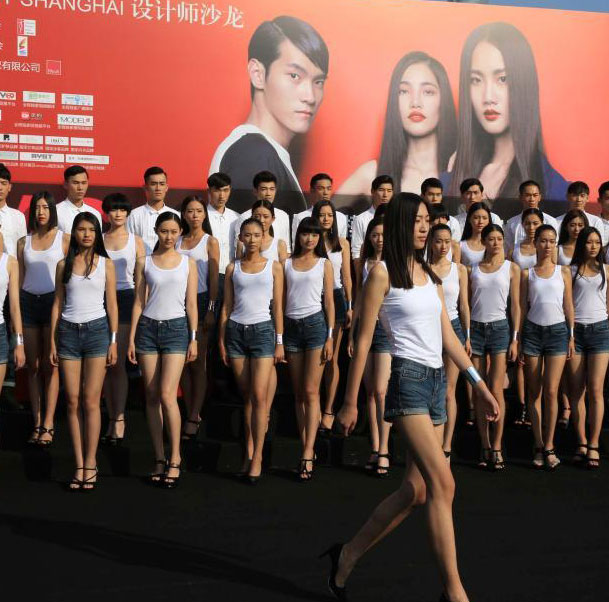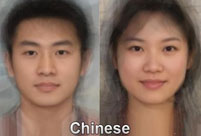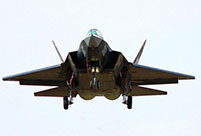 Top 100 beauties in the world!
Top 100 beauties in the world!
 Gallery: Who is the most beautiful one?
Gallery: Who is the most beautiful one?
 If you like autumn, put your hands in the air!
If you like autumn, put your hands in the air!
 Fan Bingbing's "Queen style" in new play
Fan Bingbing's "Queen style" in new play
 Lingerie show at 2014 Miss China
Lingerie show at 2014 Miss China
 J-10 fighters show aerobatic stunts in smog-free sky
J-10 fighters show aerobatic stunts in smog-free sky
 Charming contestants of Shanghai Int’l Model Contest
Charming contestants of Shanghai Int’l Model Contest
 Most amazing chi-pao beauties
Most amazing chi-pao beauties
 7 deadly animal attacks
Russia to launch 70 Proton rockets by 2020: official
7 deadly animal attacks
Russia to launch 70 Proton rockets by 2020: officialBEIJING, Nov. 6 -- Common trade rules are needed in the Asia-Pacific region as businessmen have complained about different regulations that make trade complicated, experts said Thursday.
"There are 56 free trade agreements (FTAs) in the Asia-Pacific region, and there is the possibility of a fragmentation of the trading system," said Zhang Shaogang, director-general of the international trade and economic affairs department under China's Ministry of Commerce.
Both bilateral FTAs and mega-FTAs are aimed at cutting tariffs and reducing investment barriers, but the increasing number of FTAs has also created the "spaghetti bowl" dilemma, Zhang said at a press briefing prior to the Asia-Pacific Economic Cooperation (APEC) Ministerial Meeting slated for Friday.
He compared the overlapping FTAs to different nations' traffic regulations upon which international travellers frown.
Mega-FTAs refer to trade talks comprising a large number of economies like the Trans-Pacific Partnership (TPP) and Regional Comprehensive Economic Partnership (RCEP).
Chinese companies need to cope with different trade rules when doing business with partners from the Republic of Korea, Chile and other countries, adding to their operational costs, which has become an "institutional barrier" for them, he noted.
The region's mushrooming free trade pacts resulted in mounting complexity and costs for exporters and importers from the 21 APEC members, analysts said.
"If there are common global trade traffic regulations or common Asia-Pacific trade traffic regulations, it will be much easier for companies to do businesses overseas," Zhang said.
Senior officials from APEC members agree to strengthen interaction and information sharing among the TPP, RCEP and other FTAs, and comprehensive and strategic studies of establishing the Free Trade Area of the Asia-Pacific (FTAAP) might be conducted, Zhang said after discussing an array of economic and trade topics with senior officials from other APEC economies.
The realization of FTAAP is a long-standing consensus and vision of APEC economic leaders. It can help consolidate the various bilateral and multilateral cooperation mechanisms in the region, and minimize the risks caused by overlapping and fragmented free trade arrangements.
If the FTAAP can be established to encompass smaller FTAs, the efficiency of a mega-FTA can be enhanced so as to help companies enjoy the benefits of trade liberalization, he stressed.
"However, establishing the FTAAP doesn't mean that we need to launch negotiations tomorrow," but different sides need to study how to coordinate talk achievement of TPP and RCEP in the future to pool efforts together and avoid the "spaghetti bowl" dilemma, Zhang noted.
The FTAAP is not a new idea, and it should be able to accommodate all APEC members, said Zhang Jianping, a senior researcher with the Institute for International Economic Research under the National Development and Reform Commission (NDRC), China's top economic planner.
Both TPP and RCEP can both become "important pillars" of the FTAAP, and the FTAAP should "provide space to both developed and developing countries and make them feel welcome," he stressed.
China is APEC host this year. A series of APEC meetings bearing the theme "Shaping the Future through Asia-Pacific Partnership" will be held from Nov. 5 to 11 in Beijing.
 World Pole Dance Championship in China
World Pole Dance Championship in China In pics: PLA stages live-fire drill in NE China
In pics: PLA stages live-fire drill in NE China  59-year-old Liu Xiaoqing still looks stunning
59-year-old Liu Xiaoqing still looks stunning  Standard faces for each countries in the world
Standard faces for each countries in the world Shocking! Photos of Chinese fighters revealed
Shocking! Photos of Chinese fighters revealed Images of angels in white: At work v.s off work
Images of angels in white: At work v.s off work  Post-85s female pilots and their mission
Post-85s female pilots and their mission Netizens fall in love with champion swimmer Ning Zetao
Netizens fall in love with champion swimmer Ning Zetao Vibrant 21-year-old and her own Cheongsam brand
Vibrant 21-year-old and her own Cheongsam brand Top 10 most dangerous jobs in the world
Top 10 most dangerous jobs in the world  Top 10 fifth generation jet fighters in the world
Top 10 fifth generation jet fighters in the world Top 10 Chinese goddesses
Top 10 Chinese goddesses  Top 20 hottest women in the world in 2014
Top 20 hottest women in the world in 2014 Top 10 pure beauties in showbiz
Top 10 pure beauties in showbiz  Top 10 world's highest-paid models 2014
Top 10 world's highest-paid models 2014 The most gorgeous Chinese women
The most gorgeous Chinese women Top 10 most handsome faces in Asia
Top 10 most handsome faces in AsiaDay|Week|Month